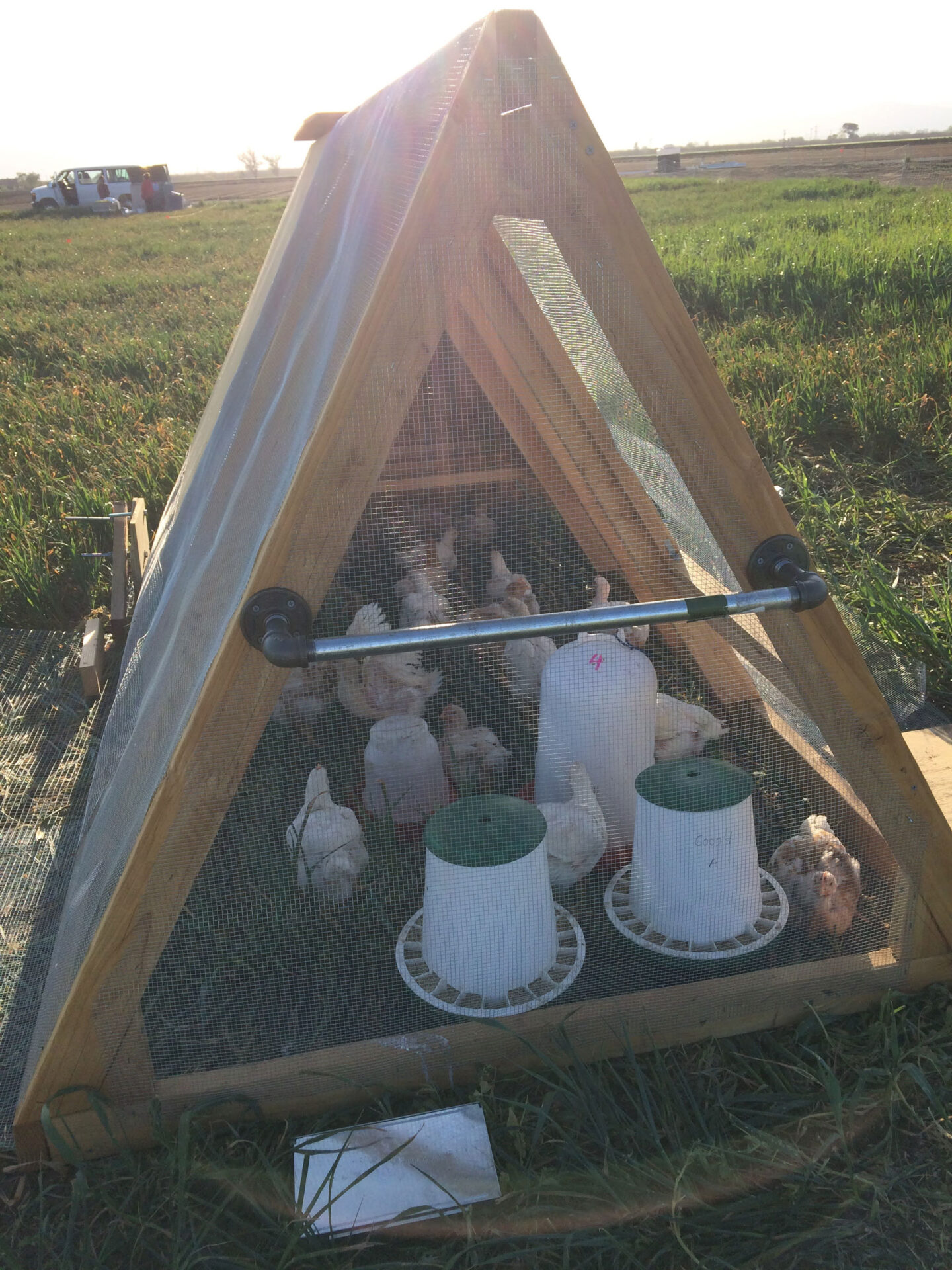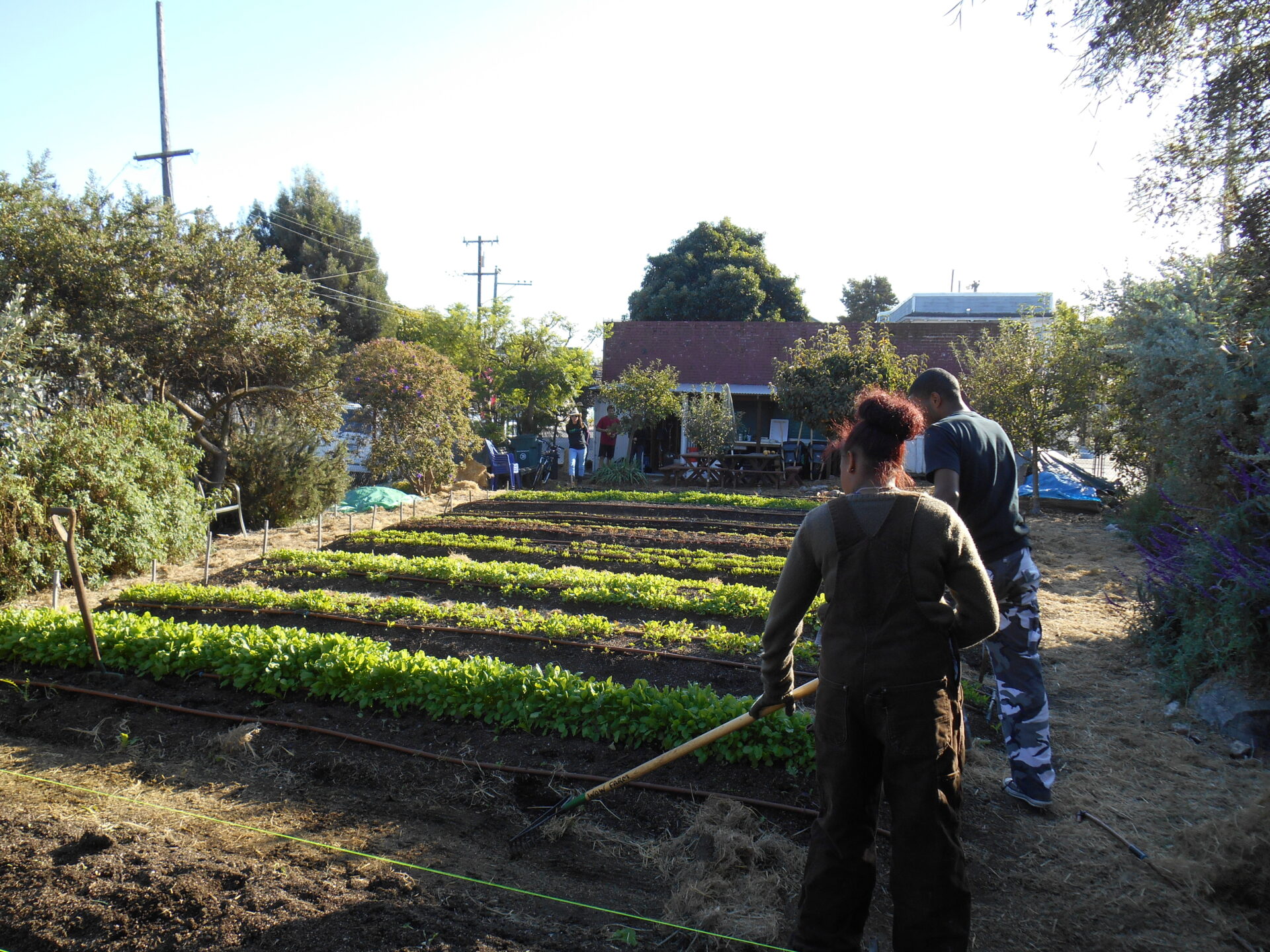A sufficient amount of nutrient-available magnesium is needed in every soil so that plants can take up adequate amounts to most efficiently utilize nitrogen for chlorophyll production. Providing essential amounts of magnesium for each soil also affects phosphate metabolism, which is needed for optimum plant growth. When the soil is deficient in magnesium, it requires more nitrogen and phosphate to produce the best yields. These are well recognized and accepted principles of biological science which should especially be considered when magnesium is deficient in any soil or crop.
One of the biggest issues facing organic farmers and growers right now is that of supplying a sufficient amount of nitrogen and phosphorus for crop production while governmental agencies at various levels are looking at how to reduce or restrict their use due to nitrates and phosphates building up in the water supply. Measuring and using magnesium effectively and efficiently can provide a definite benefit for both camps.
However, there is an even more widespread problem that is not generally recognized when dealing with plants that are deficient in magnesium. There are soils that have too much available magnesium as well as those that have too little. And though there are predominantly more soils in the world that actually contain excessive amounts of magnesium they, still fail to supply sufficient amounts of it to the plant for proper nitrogen and phosphate utilization by the crop growing there.
The problem has long been shown in field production on individual farms but has only recently been scientifically demonstrated through randomized, replicated university research plots focused on magnesium requirements. Though trials are limited to this point, that research has begun to provide the needed substantiation required for building up and maintaining the proper amount of magnesium needed for higher values and better fertility levels in crop production. The conclusions are fully applicable for use even in certified organic agricultural production.
The Role of Magnesium
Since the middle of the 20th century and perhaps longer, there has been considerable disagreement between research agronomists in the agricultural and land grant universities as to the role of magnesium in soil fertility management and how it affects both the soil’s physical structure and its influence on soil chemistry. Most agronomists maintain that magnesium is not a serious problem for production agriculture. This situation has developed due to several assumptions from past experiments which have resulted in a number of misconceptions about the specific needs for magnesium in soil fertility. These concepts have long hindered recognition of the correct needs for magnesium and its proper utilization for both soil health and crop growth.
The definitive work on magnesium requirements for agricultural operations in both government and university research was basically considered complete some 40 to 50 years ago. That research was based on a wide variation of soil testing methods that were assumed to represent the norm. In fact, those tests were far from representing the accuracy of the testing and measured response to needed magnesium applications that are possible to understand on individual farms by use of current GPS technology. With this present technology, it is now possible to obtain needed and valuable information concerning the magnesium required for benefiting both soil and plant health.
Detailed clarification using present technologies is now possible in order to prove the real needs for magnesium to maximize fertilizer use, crop quality and yields. These techniques can now demonstrate the value of magnesium for maximizing nutrient use as well as for optimizing quality and yield performance.
Past conclusions have been based on just using pH values and magnesium’s presence measured only in pounds per acre to conduct the research. Rather than determining actual magnesium percent saturation levels, which have been both scorned and shunned by most in soil agronomy, the true needs for more magnesium use have been overlooked by many working with soil fertility. New research based on soils with and without the properly determined base saturation of magnesium is now showing that efficiently supplying the needed magnesium for the benefit of growing crops can help to increase its effects. This is true for providing better fertilizer use, crop growth and yield, thus helping to benefit those farmers who face environmental limitations to better meet their production needs.
Marked differences in results from on-farm research have shown that firm conclusions should only be based on specific yield results from each field using the very same lab for testing of TEC and base saturation percentages time after time. Only such a consistent type of testing for doing research will provide farmers and growers with an avenue to more correctly utilize nitrogen applications by incorporating sufficient magnesium with it. Until that time, farmers and growers would do well to find someone who can work from soil tests based on field experience to help in that regard.
Examples for Organic Growers
There is an old rule of thumb that everyone should keep in mind. Use a soil test to determine what to do to a soil and a plant test to determine what to do to a plant. There are a couple of exceptions to this rule, and under specific circumstances, magnesium is one of those exceptions. Always remember, for food and feed crops, when the soil shows a true magnesium deficiency the plants will not get enough unless the grower takes steps to change that.
A crop that clearly demonstrates when a soil test is accurately reporting whether there will or will not be a serious magnesium deficiency is carrots. On the test we advocate, when a soil has less than 10-percent magnesium base saturation, the tops of the carrots will always die prematurely. This is true for both organic and conventional growers from coast to coast in both the U.S. and Canada, and in Europe and many other areas of the world where carrots can be successfully grown. Working since 1973 on magnesium deficient soils there are only two notable exceptions that have come up thus far. The first is when the soil sample is not correctly taken. The second is when 10 percent on the test considered here is reported as a different number on testing from another soil laboratory.
In other words, when the magnesium test shows 10 percent, some other labs actually show that soil has 8 percent magnesium. Obviously, when that soil analysis shows to be 10 percent, the carrot tops do not die prematurely since it would likely need to be two points lower to have the same results. So 10 percent is not the correct answer from every soil laboratory where a soil test may be sent for analysis. On other soil lab reports, their number may also be higher rather than lower when magnesium would measure 10 percent on the test mentioned here. The concept is not wrong, it is just that different labs report different numbers for the same level due to how they have set up their testing equipment.
A possible approach when using some other laboratory for testing soils used to grow carrots that have the problem, just watch the crop. When you see the first areas start to show the signs, take a sample in that area and send it in to see what the base saturation percent of magnesium is there. But remember this may only be the worst of the worst, and if so, those areas will continue to get larger. Once the problem has run its course, then go to the edges and pull a sample where the problem exists and where it still does not. When you find that true line, then a test done in that bad area should show as being below 10-percent base saturation of magnesium on the test we use.
Magnesium deficiency in carrots when the soil does not have enough provides an example of using the soil test to determine what the soil needs. But be sure what you add is only what the soil actually needs. Because there is another problem when the magnesium base saturation on the test exceeds 12 percent on heavier soils (8.70 or higher TEC). Once those soils contain above 12-percent magnesium, plants growing there will have trouble taking up enough for their own use. In other words, too much magnesium in a soil means that without some additional help the plants there will not be able to get enough.
However, when plants are growing in a soil that shows to have too much magnesium expect that testing of the plant leaves will still show them to be magnesium deficient. Visually, the plants seem to look fine. Normally the deficiency is there, but only as a form of “hidden hunger” which will not usually be evident. Growers can be easily fooled unless plant or leaf testing is done. In such cases, a plant analysis should be used to verify the soil actually needs magnesium.
When plant testing that does not provide guidelines for magnesium or to use as a back-up, a good reference is Plant Analysis Handbook III, by Bryson, et al., published by Micro-Macro Publishing, Inc., Athens, Georgia. Then once verified, and to the extent possible, use an effective foliar magnesium to help treat the problem since adding more magnesium to the soil may only serve to increase the excess that is already causing the problem.
There is a simple experiment that organic growers can easily try that helps show the value of adding foliar magnesium for growing crops. Legumes are some of the most sensitive crops to adequate amounts of magnesium. They respond negatively when the base saturation percentage is above 12 percent and very positively when magnesium drops just below 12 percent and remains in the 10-percent to 12-percent range – keeping in mind about how numbers on reports from different labs may vary being either higher or lower than those stated here.
Correcting Mg Deficiency Through Foliar Applications
Green beans can be used as a good test to show the value of magnesium on soils that already have too much–anything higher than 12-percent Mg base saturation on soils with a TEC of 8.70 or more. Once the beans come up, keep watching the leaves. The day the first holes are eaten in the leaves it is time for a foliar spray application. In a small pump-up sprayer mix one tablespoon of 11-percent Epsom salts in a gallon of water and mist the plants with it as a foliar. Just use enough to get the leaves wet, but not so much that the spray drips off the leaf. Leave at least some that you do not spray as a comparison.
Watch what happens in the next three days. First of all, no new holes are being eaten in the leaves of the green beans. Also, in two to three days, the beans will become darker green in color. This is because the plants were deficient in magnesium in spite of the fact that the soils correctly show too much. (Too many people forget this – when the soil has too much magnesium, the plants will not get enough.) Now the green beans are able to use the added magnesium and efficiently utilize more of the soil’s available nitrogen to make chlorophyll. Keep an eye on the leaves of the beans as they grow. If they run low on magnesium – which will happen in about three to four weeks on medium to heavy soils where testing has shown magnesium to be too high. Now the magnesium is again too low in the plant as another plant test will show—more holes will begin to appear in the plant leaves at this time and it is time to spray again with Epsom salts. Wait at least three to four weeks between foliar applications of Epsom salts as using it too often can severely dry out the plants.
When considering this, just keep in mind that the other plants being grown in such soils are suffering from magnesium deficiency too. Use that same foliar mix on them and watch the change in green color over the next two to three days. One tablespoon of Epsom salts in a gallon of water works out to about 5 pounds of material per acre applied with at least 10 gallons or more of water as a foliar application. It works well about every three to four weeks for plants growing on soils that have excessive magnesium base saturation levels.
In regard to the use of magnesium as a nutrient, by utilizing more up-to-date methods now at the disposal of the industry, it can be shown from field data how magnesium requirements, when supplied as needed for the plant, can optimize agricultural production programs. Considering field studies and the analytical methods presently available for nutrient management applications, combined with the technical advancements in GPS technology, correctly implementing the proper methods of research for better utilization of magnesium can now competently show the advantages of correctly supplying it to benefit both crops and soils. This includes more efficient fertilizer use, better plant growth, higher nutrient values and increased yields. Consequently, it can now be conclusively shown when and how the absence of adequate magnesium affects soil structure and chlorophyll production and phosphate metabolism in the plant and how its favorable use can affect nitrogen and phosphate utilization in growing plants.
However, because the needs vary widely and these needs have not been clearly defined, research is needed to prove and verify when magnesium is or is not applicable as a solution to soil nutrient problems. How much magnesium is enough in the soil? If you have too much, can you get rid of the excess? Is that even possible and even if so, is it worth the time and the effort? That along with other considerations about magnesium and its effect on soil fertility will be considered next time.
Neal Kinsey is owner and President of Kinsey Agricultural Services, a consulting firm that specializes in restoring and maintaining balanced soil fertility.







